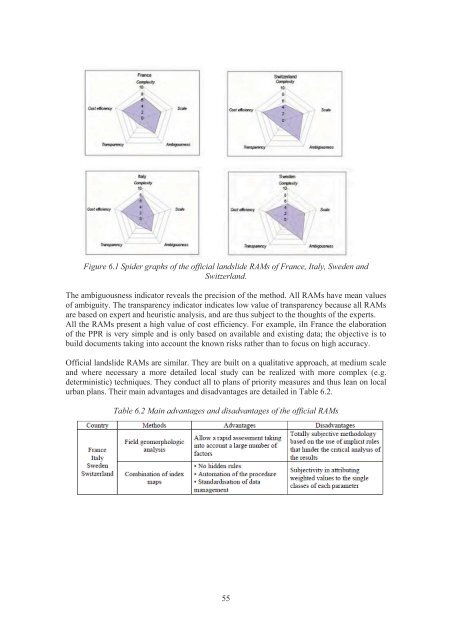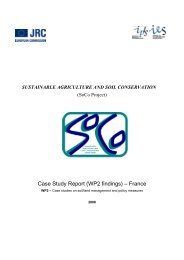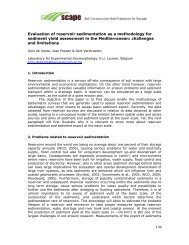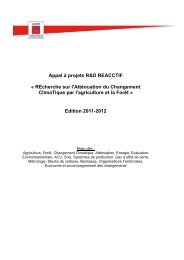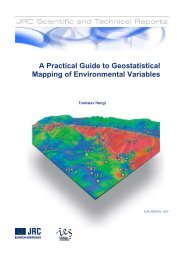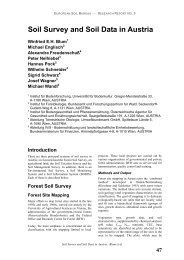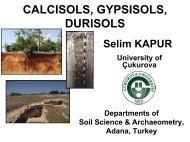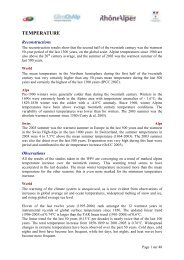Risk Assessment Methodologies of Soil Threats in Europe
Risk Assessment Methodologies of Soil Threats in Europe
Risk Assessment Methodologies of Soil Threats in Europe
Create successful ePaper yourself
Turn your PDF publications into a flip-book with our unique Google optimized e-Paper software.
Figure 6.1 Spider graphs <strong>of</strong> the <strong>of</strong>ficial landslide RAMs <strong>of</strong> France, Italy, Sweden and<br />
Switzerland.<br />
The ambiguousness <strong>in</strong>dicator reveals the precision <strong>of</strong> the method. All RAMs have mean values<br />
<strong>of</strong> ambiguity. The transparency <strong>in</strong>dicator <strong>in</strong>dicates low value <strong>of</strong> transparency because all RAMs<br />
are based on expert and heuristic analysis, and are thus subject to the thoughts <strong>of</strong> the experts.<br />
All the RAMs present a high value <strong>of</strong> cost efficiency. For example, iIn France the elaboration<br />
<strong>of</strong> the PPR is very simple and is only based on available and exist<strong>in</strong>g data; the objective is to<br />
build documents tak<strong>in</strong>g <strong>in</strong>to account the known risks rather than to focus on high accuracy.<br />
Official landslide RAMs are similar. They are built on a qualitative approach, at medium scale<br />
and where necessary a more detailed local study can be realized with more complex (e.g.<br />
determ<strong>in</strong>istic) techniques. They conduct all to plans <strong>of</strong> priority measures and thus lean on local<br />
urban plans. Their ma<strong>in</strong> advantages and disadvantages are detailed <strong>in</strong> Table 6.2.<br />
Table 6.2 Ma<strong>in</strong> advantages and disadvantages <strong>of</strong> the <strong>of</strong>ficial RAMs<br />
55


